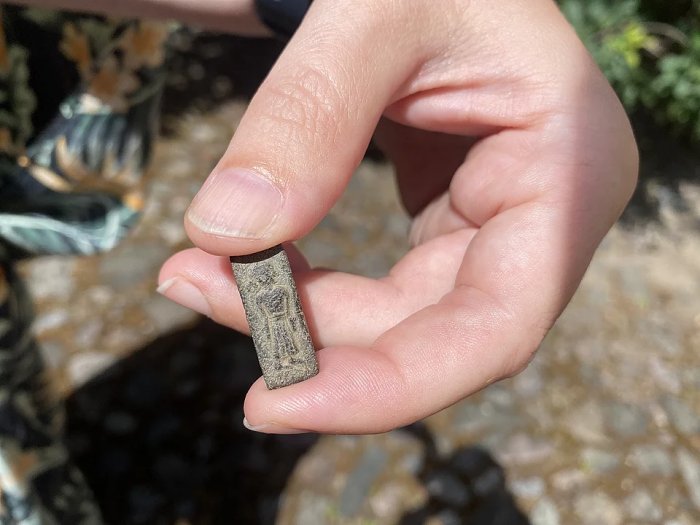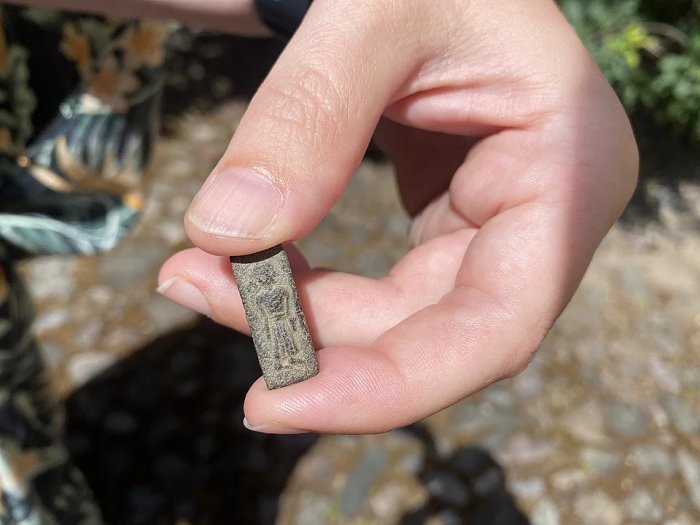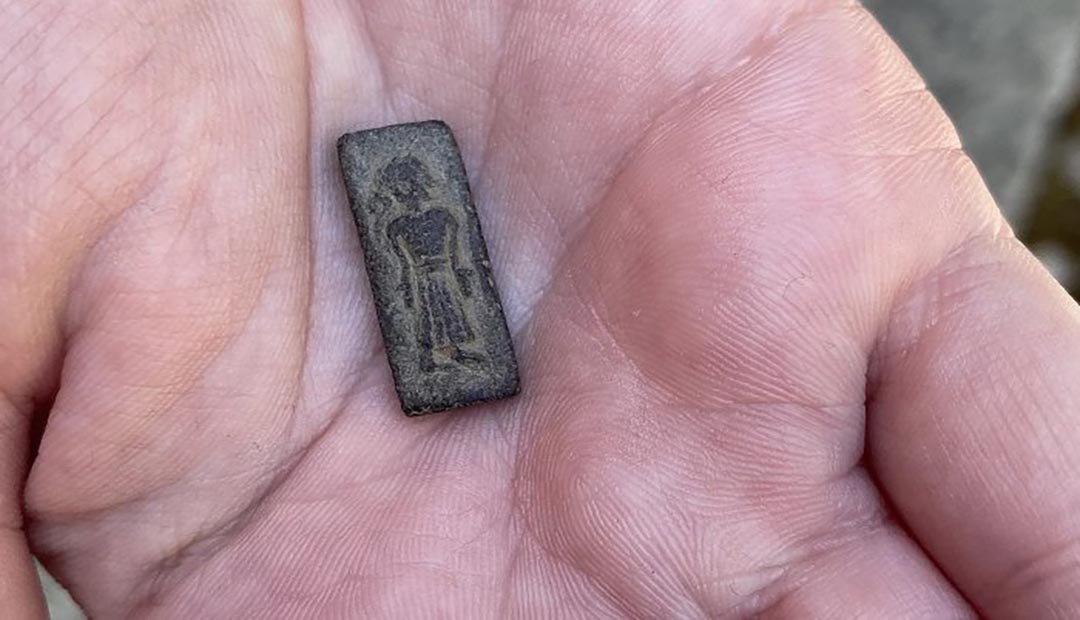Rare Ancient Stamps Found in Falster Could Shed Light on Unknown King’s Home
A metal detectorist in Denmark has made an intriguing archaeological find. While being out on a rainy day and searching for anything of historical value, he suddenly heard a faint beep on his equipment. When Lennart Larsen checked the soil, he discovered tiny, curious objects that were unlike anything he had seen before. Larsen could not determine what the objects were, but they appeared old.
The Museum Lolland-Falster has been informed but does not want to reveal the location of the find as there may be more archaeological objects at the site.
According to experts, the objects discovered by Larsen suggest was once a large settlement where a great man or early king lived.
“This indicates that we are standing in a place that has meant some trade and probably also had some form of cultic activity. And although it’s a bit wild to say, it could also indicate that it was once a center of power on Falster,” museum inspector and archaeologist Marie Brinch from the Lolland-Falster Museum told Tv2 Øst.

She emphasizes that the find was made in an area with names that date from the Viking Age or an even older era and that at the same time, the marshland has been found in the area that has been sacrificed to the gods in the century to when the stamp was created.
Falster has long puzzled archaeologists who have come across several signs of activity from the Iron Age, and the Viking Age have been found, including an enormous shipyard and a large castle from the Viking Age. However, very few discoveries have been made that can show where the powerful elite lived on the island in the years up to when the Viking Age really started. The new find may help to shed light on that.
“Falster is a small place, and we may not have a unified center of power in the area, but a number of locations that can be described as parts of a larger complex connected to the same power.
Among other things, we have the large Hannenov ring that was found in the forest north of the Viking castle, and now these finds indicate that it is a center of power. It makes sense – also because, like all other centers of power at the time, it is at the right distance of about five kilometers from the coast,” says Marie Brinch.

Scientists have determined the tiny objects discovered by Larsen are stamps from the era just before the Viking Age. They were created between the years 500 and 700.
It was a time when people often produced gold objects and offered them to the gods during rituals.
Margrethe Watt from the National Museum, who is collecting and researching ancient gold coins and stamps, says these are very rare.
With the stamp from Falster, a total of 28 have been found in the entire Nordic area, and the stamp is also very special. No stamps or gold coins have been found south of the Baltic Sea.
“The stamps are all very special. We only find them in the most important places of residence – those that we call the central places in the technical language. These are the places that we associate with the greatest magnates or kings. That’s the league we’re in here. And this stamp is at the same time very much for itself in its style,” she says.

“On the stamp from Falster, you can see a person in fine clothes, standing with their hands at a very special angle. The hands are down, and the palms are visible. It is something that we know in both Christian and pre-Christian cultures as either a sign of submission or a revelation. It is also a symbol that we see in many churches today, Watt explains.
Neither the god nor the king were shown as weak or flawed in any way. And you don’t see that on the stamp from Falster either.
“This means that it is either a royal figure who submits to a god – or that it is a god who reveals himself to a human being,” she says.
In the 5th century, people had already started to cultivate the Asa faith in many places in Denmark. However, Margrethe Watt does not dare to guess what it might be that you see in the picture.
“It is actually difficult to see if it is a man or a woman who is depicted. You would see that by the fact that there is a tuft of hair on the back of the piston. But it may well appear that there is, she says, and emphasizes that it requires further investigations to determine whether this is the case.
We see some women with a very prominent chin, so it might as well be what you see.
Right now, I’m mostly leaning towards it being a woman – and the find is very special. But I dare not say anything with certainty,” Watts says.
Producing the tiny stamps required a very special craftsmanship knowledge and the person who made them was obviously skilled.




